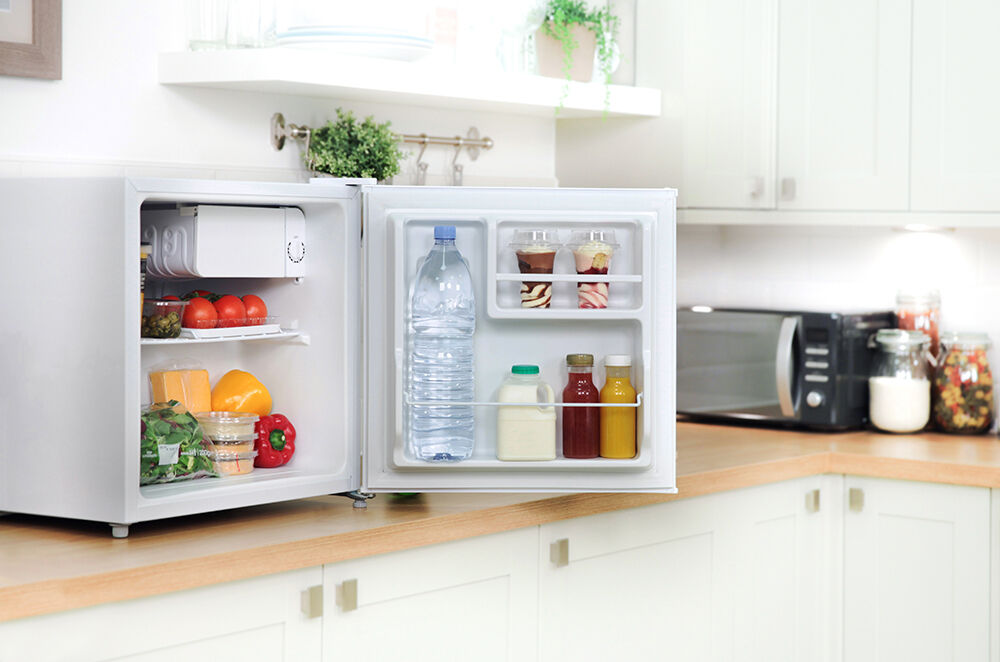A mini-fridge typically uses 0.8 to 1.5 amps when its compressor is running.
How Many Amps Is A Mini Fridge?
Let’s face it, mini-fridges are a lifesaver. These compact cooling companions are perfect for dorms, bedrooms, offices – basically anywhere you need a cold drink or snack within reach. But, before you plug one in, there’s a crucial question: how much power does this little guy use? Specifically, how many amps does a mini-fridge draw from your electrical outlet?
The truth is, there’s no single, universal answer. A mini-fridge’s amperage depends on a few factors:
- Size: Bigger mini-fridges generally need more power.
- Model & Efficiency: Newer, energy-efficient models tend to use fewer amps.
- Compressor Activity: The compressor is the heart of the fridge, and its activity significantly impacts how much electricity is being consumed at any given moment.
Typical Amperage Range
Generally speaking, most mini-fridges will need between 0.8 and 1.5 amps of current when the compressor kicks in. However, don’t let that number scare you; that compressor isn’t running all the time. It cycles on and off to keep those drinks frosty, so your actual power usage over time will be less.
Why Does This Matter?
Understanding amperage is key for a couple of reasons:
- Circuit Safety: You don’t want to overload your electrical circuit by plugging too many power-hungry devices into the same outlet.
- Power Source: If you’re planning on running your mini-fridge off a portable generator or solar system, knowing the amperage will help you choose the right equipment.
How To Find Your Mini-Fridge’s Amperage
The easiest way to nail down your specific model’s amp draw is to:
- Check the Label: There’s usually a sticker on the back or inside the fridge listing electrical specifications, including the amperage.
- Consult the Manual: Your owner’s manual should have the details.
- Go Online: Search for your fridge model online to find its spec sheet.
Understanding Amps vs. Watts
You’ll often see a mini-fridge’s power consumption listed in watts (W) alongside amps (A). Don’t get the two terms confused:
- Watts: A measure of power, or how much energy the fridge uses at any given moment.
- Amps: A measure of electrical current, or how much electricity is flowing through the wire.
Here’s a quick table to illustrate some common mini-fridge power scenarios:
| Fridge Capacity (Cubic Feet) | Typical Wattage | Typical Amperage (at 120 Volts) |
| Under 2 cu. ft. | 50-80W | 0.4 – 0.7 A |
| 2 – 3 cu. ft. | 80-120W | 0.7 – 1.0 A |
| 3 – 4.5 cu. ft. | 120 -180W | 1.0 – 1.5 A |
Factors That Can Influence Amperage
Remember, the numbers above are just a guide. Here’s what might make your mini-fridge draw more power:
- Ambient Temperature: Hotter rooms make your fridge work harder, leading to higher amperage.
- Frequent Door Opening: Every time you open that door, warm air rushes in, making the compressor work overtime.
- Old or Inefficient Model: These tend to be power hogs compared to newer fridges.
Putting It All In Perspective
In the grand scheme of things, mini-fridges actually use relatively little power. For instance, a standard 15-amp household circuit can easily handle a mini-fridge along with a bunch of other appliances.
Energy Efficiency & Cost
While mini-fridges are convenient, their electrical consumption can add up over time. Here’s how to keep your costs in check:
- Look for Energy Star: Opt for an Energy Star-rated mini-fridge. These models meet strict energy efficiency standards set by the EPA.
- Calculate the Cost: You can estimate your mini-fridge’s running costs using an online calculator (there are many free ones available). You’ll need your fridge’s wattage and local electricity rates.
- Keep It Cool: Place your mini-fridge away from heat sources like direct sunlight or ovens. This helps it run more efficiently.
- Fill It Up (Just Not Too Much): A well-stocked fridge maintains a more stable temperature, reducing how often the compressor needs to kick on. But, avoid overpacking, as this can hinder circulation.
Tips For Safe & Efficient Use
Let’s wrap things up with a few essential pointers to keep your mini-fridge running smoothly and safely:
- Dedicated Circuit: While not always strictly necessary, it’s ideal to plug your mini-fridge into a dedicated outlet or a circuit shared with minimal other devices.
- Proper Ventilation: Leave some space around your mini-fridge for airflow, especially at the back where the heat is released.
- Temperature Control: Most mini-fridges have a temperature dial. A setting between 3-5 is usually ideal for keeping food cold and safe.
- Regular Maintenance: Defrost if your fridge has manual defrost, and keep the coils at the back clean to ensure optimal performance.
Table: Common Household Appliances & Their Amperage
To give you a better sense of where your mini-fridge stacks up against other appliances, here’s a handy comparison table:
| Appliance | Typical Amperage Range |
| Mini-Fridge | 0.8 – 1.5 A |
| Microwave | 5 – 15 A |
| Hairdryer | 10 – 15 A |
| Standard Refrigerator | 3 – 6 A (running); up to 15 A (startup) |
| Space Heater | 10 – 15 A |
| Central Air Conditioner | 15 – 30 A |
Conclusion- How Many Amps Is A Mini Fridge?
So, how many amps is a mini-fridge? In most cases, you’re looking at 0.8 to 1.5 amps when the compressor is running. Understanding your mini-fridge’s power consumption is not just about safety; it’s also about managing your utility bills and making informed choices when it comes to appliances.
